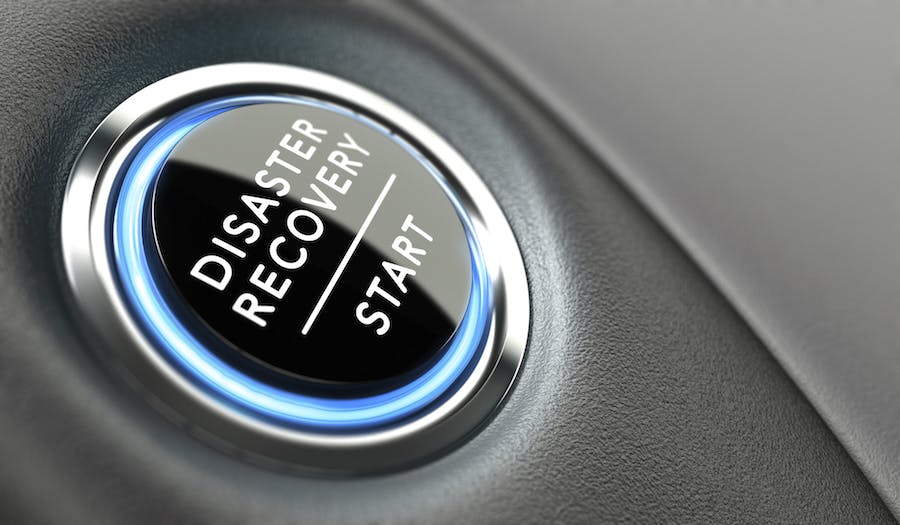For years summer in Australia has had a reputation as a time for backyard barbeques, beaches and holidays but recently, businesses have begun to view our hottest months in a new light. The increasing severity of storms and cyclones, devastating floods, unexpected power outages, plus the long dry spells that can lead to devastating bushfires have made the lead-up to summer a time of disaster preparation for many IT departments. While no-one wants to believe in the worst, understanding the risks to the business and taking appropriate precautions are prudent steps for any organisation. And one of the most important of these is to put in place a fast, easy and affordable disaster recovery solution for client systems.
Arguably, the two most dangerous threats to business are flood and fire. Their impact is swift and the residual effects can last for months, if not years. It’s estimated around seven per cent of Australian addresses are at risk of flood. For almost three per cent of addresses, that risk is classed as moderate to severe. As Brisbane-based businesses learned in 2011 and again in 2013, floods don’t discriminate between urban and rural areas. Bushfires may pose a lesser risk to those in the city, but for many regional, rural and remote businesses, they are a real threat.
For these reasons, just as every business should have in place an emergency management plan, so too should every IT department.
The disaster recovery facility
Out of all of IT’s responsibilities during an emergency, disaster recovery (DR) is perhaps the most critical. Companies need to know that their investment in systems and data is protected, especially when a disaster occurs
While there are plenty of expensive and complex approaches to DR, such as handing over DR management to another organisation or replicating your systems in real time to a fully redundant off site data centre, there are also some very effective and simple ways to ensure data and systems remain safe.
When an emergency makes it impossible to continue to work on site, one approach is to pay for access to an off-site disaster recovery facility. Equipped with rooms filled with PCs, these facilities provide the infrastructure that allows businesses to run their systems and access their data via the cloud or using backup storage devices.
The only real downside of this solution is that access to these DR facilities is often on a first come, first served approach. If your city or suburb has been affected by flood and numerous companies are affected, you may find your organisation stuck in a queue, waiting to get in to the facility.
Take your system with you
Another way to provide controlled access to your systems is by physically taking them with you. Since 2011 it has been possible to purchase a fully functioning portable version of Windows on a specially developed Windows To Go USB flash drive. Similar in look and size to any other USB stick, the Windows To Go drive contains a bootable, workable version of Windows. When users plug the USB drive into their laptop or home PC, they are presented with the familiarity of their normal enterprise desktop environment, complete with any corporate policies and security.
Inexpensive and fast to deploy, the Windows To Go drives provide a fast backup resource for any organisation at a time when they need to pack up and go quickly. The low price of the drives compared to traditional alternatives and their ease of use make them particularly appealing to small and medium businesses. Industry tests have shown that deploying Windows To Go drives can produce cost savings of up to 59 per cent compared to VDI or laptop installations.
Coupled with a cloud solution for back end services, this USB-based approach provides total portability of data and ensures managers and employees can continue to work with corporate systems from any device and any location, despite the uncertainty and upheaval occurring around them.
Data protection is sound risk management
A good practice when developing a DR plan is to prioritise the value of your applications. To do this you need to determine the value of an application when it’s running, and understand the impact when it stops. If you have to pack up and leave immediately, know what you must take with you and what isn’t important.
You should also consider data confidentiality and security. Some Windows To Go drives can be secured with Microsoft Bitlocker. For more security conscious organisations, there are also hardware encrypted devices which may also wipe or self-destruct after a set number of incorrect password attempts. And for those organisations, usually government bodies that must have a certified device, look for devices which can offer FIPS 140-2 Level 3 certification. This is a requirement for civilian and military US federal agencies, and is considered a benchmark for security and reliability for enterprises requiring the highest level of security.
Making sure your IT department is prepared for whatever summer may bring is an important part of business planning. If you have to abandon your workplace, even for a short time, users are still going to need access to hardware and enterprise systems. This can be difficult to achieve, but with a USB-based solution, users can take their data with them. They can continue to work using any Windows-compatible device, no matter where they find themselves. And in the event of a major emergency, this may be an essential first step towards keeping the business running.
About the author:
Sven Radavics is the General Manager – APAC, Imation Mobile Security (IronKey).

